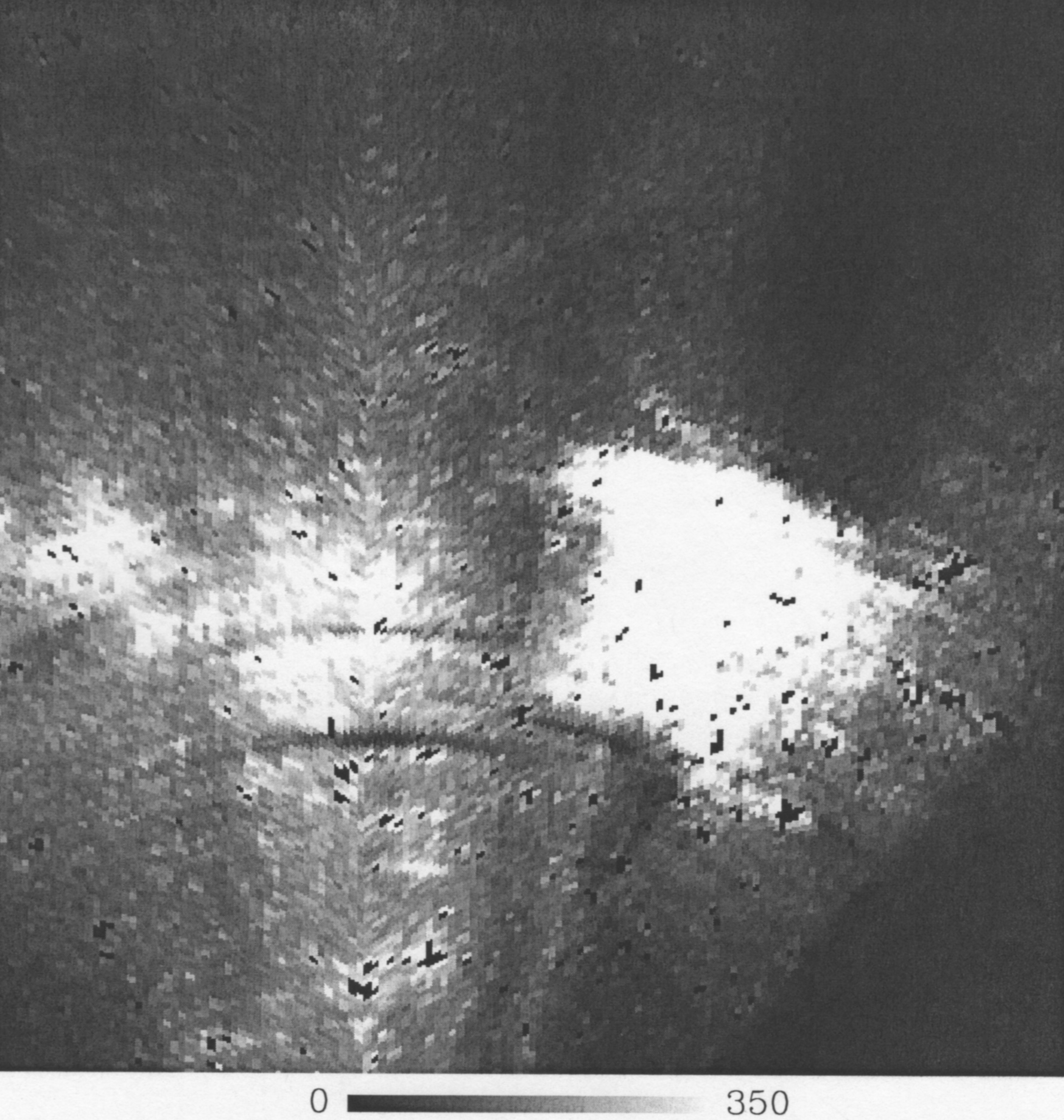This article describes the star removal phase of the data processing. The FIMS and SPEAR procedures differed substantially on this step.
On this page...
Stars can be difficult to distinguish from diffuse emission in FIMS-SPEAR data, not to mention inconvenient to work around, so the removal of stars from the hyperspectral maps is a very important step. Additionally, when working with SPEAR products or with anything but the Nside=512 FIMS products, some star removal procedures were essentially performed at a higher resolution than map's pixels, which means that the removal of stars can have the subtle effect of changing the intensity in each pixel, rather than always manifesting as holes in the map.
FIMS
The removal of bright point sources was performed as follows. First, the team developed a photon count-rate map that was pixelated using the HEALPix scheme with a resolution parameter Nside=512, corresponding to a pixel size of about 6.9 arcmin. Photons from bright point sources are scattered by the instrument and contaminate the pixels around point sources. Hence, the team performed two-dimensional Gaussian fitting for the bright pixels whose photon count-rates were higher by a factor of three or more than the median photon count-rates of a 100 arcmin × 50 arcmin sub-region around each pixel of the image. The team also removed all the pixels within the oval regions corresponding to the three-sigma widths derived from the fitting for each bright source
SPEAR
Two strategies were employed to remove stars. The simplest was to apply a median filter to the 15 arcmin-resolution hyperspectral HEALPix maps. This method is straightforward, but throws out every skypixel populated by a moderate-to-bright star. Also, because the sky maps are constructed from multiple observations, timing and pointing errors can spread out the light from faint stars to the point where they are not removed by the median filter. A superior method worked directly on the telemetry stream. Each orbital scan was made into an image and convolved with an edge detection kernel (zero sum) shaped like the stellar PSF. The resulting image is zero everywhere except at the location of stars. Any region that shows counts 3 sigma above the local background was considered a star. All photons that lie within a 3 arcmin radius of the star centroid were flagged in the data structure. Most faint and all bright stars were effectively removed using this strategy. Employing the convolution method to individual orbits first, then the median filter to the sky maps yielded all-sky survey maps that contained many more sky pixels, yet significantly lower continuum levels than the median filter method alone (indicating that more stars were successfully removed from the diffuse continuum). Figure 1 shows a section of the sky near the Galactic center where only the median filter was applied. Figure 2 shows the same region using the two-step convolution+median filter method. Far fewer sky pixels have been removed, yet the mean continuum counts are reduced by 21%. Approximately 61,000 stars were detected with the convolution method.
Figure 1 - count image, spanning about 60 degrees across, with only the SPEAR median filter applied (Generation 8 SPEAR processing). Mean continuum counts are 38.2 photon/pixel.
Figure 2 - count image, spanning about 60 degrees across, with the SPEAR two-step convolution+median filter method applied (Generation 9 SPEAR processing). Mean continuum counts are 30.0 photon/pixel.

